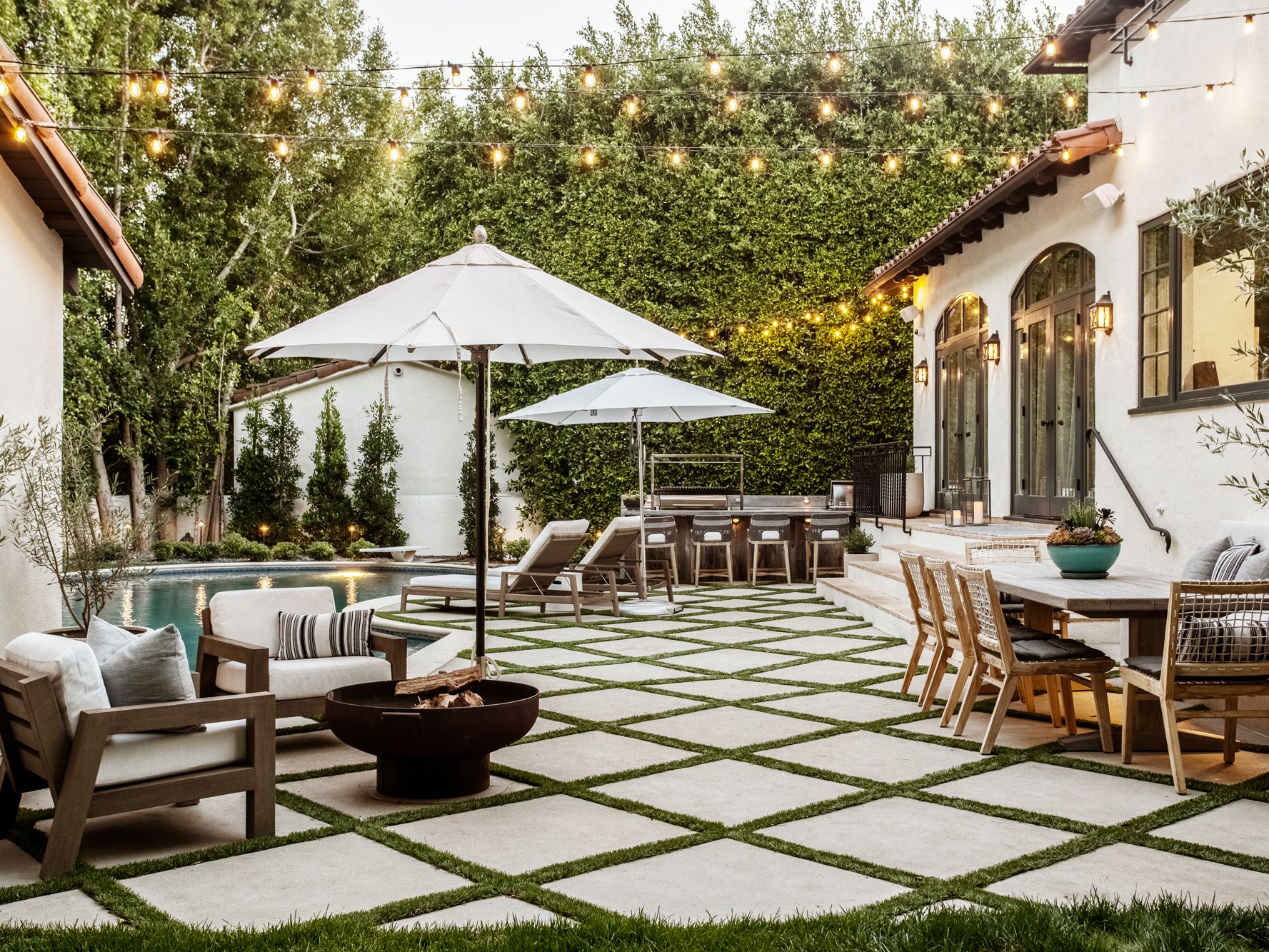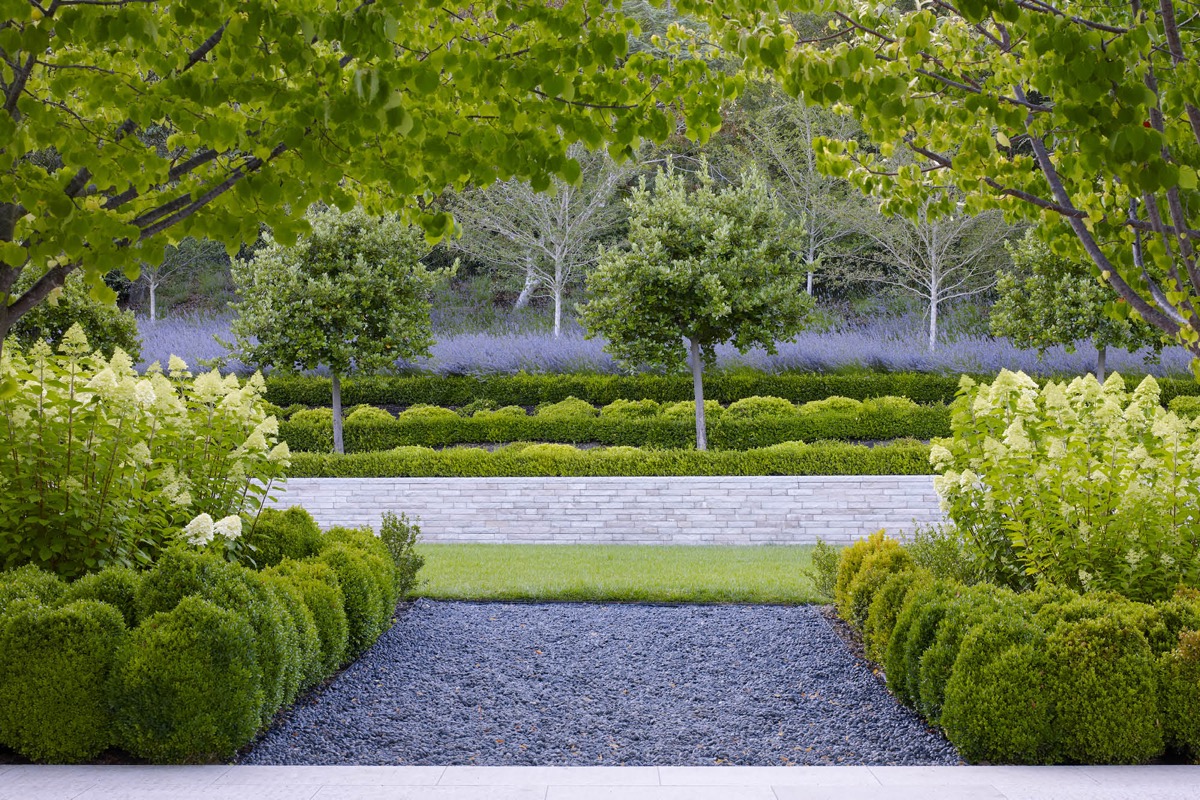Outdoor kitchens vs. Traditional Patios: How to Choose the Best Fit
Transform Your Space With Professional Outdoor Landscape Design Providers: From Patios to Outdoor Kitchens
Transforming exterior rooms calls for competence and careful planning. Professional landscaping solutions can elevate a property's capability and aesthetic appeals. From creating welcoming outdoor patios to crafting totally outfitted outdoor kitchen areas, these professionals bring important expertise. They ponder neighborhood climates and sustainable techniques, making certain each project lines up with the homeowner's vision. What are the key aspects to contemplate when initiating such an improvement? The answers might stun you.
The Advantages of Specialist Outside Landscaping

Creating Your Perfect Patio Area
When preparing the ideal patio area, home owners ought to mirror on both functionality and appearances to produce a space that complements their way of living. A properly designed patio area works as an expansion of the home, offering a suitable area for relaxation, entertainment, or dining outdoors. Secret aspects to contemplate include the shapes and size of the patio area, which ought to integrate with the bordering landscape and home architecture.Material option is likewise vital; choices such as all-natural stone, pavers, or wood can improve the total appearance while using longevity. House owners need to consider furniture arrangement, guaranteeing adequate room for movement and convenience. Including components like shade frameworks, fire pits, or planters can include personality and utility.Lighting plays a significant duty in patio design, enhancing ambiance and functionality during evenings. Inevitably, an attentively made patio can elevate outdoor living experiences and enhance residential property value.
Producing an Outdoor Kitchen
Developing an exterior cooking area enhances the capability and enjoyment of any type of outside room. Trick functions, such as grills, kitchen counters, and storage, play a vital duty in the layout and format of this cooking haven. By considering important aspects, house owners can craft a room that flawlessly blends with their landscape while satisfying their cooking requirements.
Necessary Kitchen Attributes
An outside kitchen area can change a yard right into a cooking place, enhancing both capability and social interaction. Crucial kitchen features consist of a durable grill, which works as the centerpiece for outside food preparation, enabling different cooking designs. Counter room is necessary, supplying ample room for food preparation and serving. A sink is likewise necessary, making it possible for very easy clean-up and helping with cooking tasks. In addition, incorporating a refrigerator warranties active ingredients and drinks remain fresh and accessible. Storage space solutions, such as cabinets or racks, aid preserve organization and efficiency. Integrating weather-resistant materials ensures long life and longevity, making the outside kitchen a trusted room year-round. Together, these attributes develop an inviting environment for family members celebrations and enjoyable visitors.
Style and Design Tips
While creating an exterior kitchen area, cautious thought of the design can greatly enhance both capability and visual appeals. Sod replacement Toronto. An effective layout begins with zoning, separating the area into cooking, eating, and prep work areas. Putting the grill near the food preparation zone streamlines the cooking procedure, while assuring enough counter area for meal assembly is crucial. Including an eating location that allows for simple motion motivates social communication. Additionally, integrating storage space remedies such as closets and drawers keeps the space organized. It's crucial to assess the flow of foot traffic, staying clear of blockage by preserving clear pathways. Making use of durable products that withstand outside conditions warranties longevity, while thoughtful lights can create a welcoming setting for evening celebrations.
Enhancing Curb Allure With Landscape Design
Enhancing aesthetic appeal via landscaping entails a cautious equilibrium of style components that draw attention and develop an inviting environment. Strategic plant positioning can highlight architectural attributes, while thoughtful hardscaping includes structure and impact. With each other, these components transform the exterior of a residential property, making a long-term impression on site visitors and passersby.
Design Elements That Astound
Involving design components play a vital role in enhancing a property's aesthetic charm, as they produce an inviting very first perception for visitors and passersby alike. Thoughtfully developed functions, such as attractive pathways, stylish fencing, and lively flower beds, contribute to a cohesive visual. One-of-a-kind centerpieces, like a fashionable water feature or a striking sculpture, can attract attention and stimulate rate of interest. Additionally, well-placed outside lighting not just brightens paths yet also highlights building details during the night. Integrating multi-level landscapes with differing structures and shades includes deepness and dimension, producing a vibrant visual experience. Inevitably, these captivating design components function sympathetically to boost the overall charm of a home, making it attract attention in the neighborhood.
Strategic Plant Placement
Strategic plant placement significantly influences a residential or commercial property's curb charm, complementing the interesting layout aspects currently in position. By attentively picking and placing plants, homeowners can develop an unified blend of color, structure, and elevation that attracts the eye. For instance, putting taller plants in the direction of the back and shorter ones in front establishes depth. Additionally, making use of native plants can improve the landscape's sustainability while supplying seasonal rate of interest. Colorful blossoms can be deliberately placed near paths or entryways to welcome visitors, while evergreen hedges supply year-round structure. Moreover, including seasonal blooms assurances ongoing visual appeal. Generally, tactical plant plans not just raise aesthetic appeals yet likewise add to a welcoming atmosphere that shows the house owner's design and boosts the total residential property value.
Hardscaping for Influence
While plants play a necessary function in landscaping, hardscaping components can greatly boost a residential or commercial property's aesthetic appeal by providing structure and aesthetic passion. Functions such as stone pathways, block patio areas, and ornamental walls produce a solid foundation that complements greenery. These aspects not only define rooms but additionally guide site visitors via the landscape, boosting the overall experience. Additionally, integrating outside lights right into hardscaping can emphasize building details and develop a warm, inviting ambience during the night. Fire pits and outdoor kitchen areas include functionality, making outdoor locations much more comfortable and enticing. By mixing hardscaping with soft landscaping, house owners can attain an unified balance that mesmerizes the eye and improves building worth. Inevitably, thoughtful hardscaping changes outdoor rooms into stunning displays.
Choosing the Right Plant Kingdoms and Products
When choosing plants and materials for outdoor landscaping, it is necessary to contemplate variables such as climate, soil conditions, and planned usage of the space. A successful landscape design integrates with the natural surroundings, ensuring that picked plants prosper and add to the total aesthetic. Neighborhood environment affects the choice of vegetation; for instance, drought-resistant selections are preferable in deserts, while lavish plant suits much more pleasant climates.Soil quality likewise plays a significant duty in plant health and wellness. Carrying out soil tests can help establish pH degrees and vitamins and mineral content, leading the option of appropriate plant types. In addition, the intended use of the room-- be it for leisure, entertaining, or horticulture-- will certainly affect options concerning plants and materials. Resilient, weather-resistant products are important for hardscaping elements like patios and pathways, while selecting plants that offer year-round interest boosts the landscape's appeal throughout the seasons.
Lasting Landscape Design Practices
Lasting landscaping practices focus on producing exterior rooms that are ecologically responsible and resource-efficient throughout their life cycles. These techniques emphasize the use of native plants, which require much less water and maintenance, thus promoting biodiversity and reducing reliance on chemical plant foods and chemicals. Rainfall gardens and absorptive paving are usually carried out to take care of stormwater drainage, enhancing groundwater recharge and minimizing flooding risks.Additionally, sustainable landscape design incorporates composting and organic mulch to enhance dirt wellness, lowering the need for artificial dirt modifications (BBQ island). Reliable irrigation systems, such as drip watering, are developed to preserve water while making sure plants receive sufficient hydration.Moreover, using reclaimed products for hardscaping elements minimizes waste and motivates a circular economic situation. Via these techniques, lasting landscape design not just boosts aesthetic appeal however also promotes eco-friendly balance, adding to much healthier settings for both areas and wildlife

Upkeep Tips for a Long Lasting Landscape
To ensure a landscape remains lively and healthy and balanced over time, normal upkeep is crucial. Home owners need to prioritize watering, making sure plants receive sufficient hydration, especially during droughts. Mulching around plants not only conserves dampness but also suppresses weeds and manages soil temperature. Routine pruning of bushes and trees promotes healthy and balanced growth and boosts aesthetics.Moreover, lawn treatment is important; mowing at the correct height and freshening dirt can enhance wellness and resilience. Feeding plants appropriately, based on soil examinations, supports nutrient needs and cultivates durable development. Additionally, bug administration must be aggressive, utilizing integrated insect monitoring methods to lessen damages without harming advantageous insects.Seasonal clean-ups, including Sod replacement Toronto leaf elimination and debris clearance, aid preserve an organized look. Ultimately, regular assessments for signs of condition or distress assurance timely treatments, protecting the landscape's elegance and longevity. Adhering to these maintenance pointers will lead to a flourishing, enduring exterior setting.

Regularly Asked Questions
For how long Does the Landscape Design Refine Typically Take?
The landscaping process commonly differs in period depending on task extent and complexity. Smaller tasks might take a few days, while bigger makeovers can span numerous weeks to months, making certain careful focus to information and quality.
What Is the Typical Cost of Outdoor Landscape Design Providers?
The average price of outside landscaping services differs extensively, generally varying from $1,000 to $10,000. Elements affecting this cost consist of task size, materials made use of, and the intricacy of the style and installation processes.
Do I Required an Authorization for Outdoor Landscape Design Projects?
Identifying whether a permit is required for exterior landscaping tasks varies by area and project scope. Sod replacement Toronto. Home owners should speak with neighborhood laws and zoning legislations to guarantee compliance before starting any landscape design work
Can Landscape Design Providers Aid With Drain Issues?
Landscaping services can effectively resolve drainage problems by examining the site and implementing services such as correct grading, setup of water drainage systems, and the usage of suitable plants to take care of water overflow efficiently.
What Kinds of Guarantees Are Used on Landscape Design Job?
The sorts of guarantees used on landscape design job can vary substantially. Generally, they include coverage for plant health and wellness, products, and handiwork, often lasting from one to numerous years, relying on the solution copyright's plans and warranties.